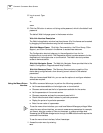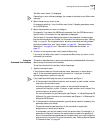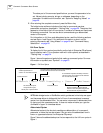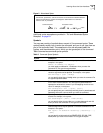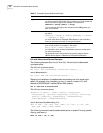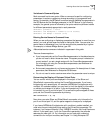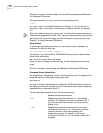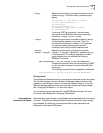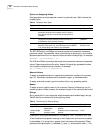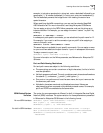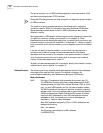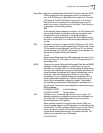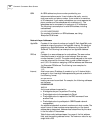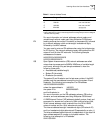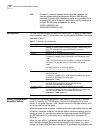
28 CHAPTER 4: CONFIGURING BASIC SETTINGS
Syntax for Assigning Values
Most parameters must be assigned a value of a particular type. Table 4 shows the
possible types.
The SET, SETDefault, and SYSgen commands require both parameter names and
parameter values. The parameter name is followed by an equal sign (=) and a value.
Spaces are permitted, but not required, before and after the equal sign, for example:
SETDefault -SYS ScreenLength = 30
The ADD and DELete commands also require both parameter names and parameter
values. These commands modify sets of objects. No equal sign precedes the value
that is added or deleted as a set member, for example:
ADD -IP ADDRess 10.0.0.1 %080002001234
Numeric Values
To assign a hexadecimal value to a parameter, precede the number with a percent
sign (%). Alphabetic characters can be entered in upper- or lowercase letters.
To assign a decimal number, type the number without any preceding symbol.
Names
To assign a name, type the name in the command. Names, unlike strings, do not
require quotation marks; however, the character length of the name may be limited.
Strings
String values fall into two categories: single characters and variable-length strings.
Table 5 lists the conventions for entering string values.
Characters in a string are case-sensitive. For example, “ABC” is different from “abc.”
A few characters have special meaning to the bridge/router and must be preceded
by a backslash (\) in string text to prevent them from being misinterpreted. These
symbols are the apostrophe ('), backslash (\), caret (^), and quotation mark (“). For
Table 4 Parameter Value Types
Type Meaning Example
Numbers Represent the numerical value of a parameter. 15, 1024
Names Usually represent either system-defined parameter or
parameter values (written as param-name or value) or
user-defined macros or files (written as macroname or
filename).
Route, None
Strings Some parameter values can be set to user-defined strings,
ranging from a single character (written as char) to a
multicharacter string (written as string).
“A,” “B,”
“password”
Addresses Two types of addresses can be assigned: media addresses for
Ethernet, FDDI, token ring, and wide area protocols (SMDS,
X.25, Frame Relay) and network layer addresses.
#311040800245,
129.213.24.30
Table 5 Conventions for Entering Strings
String Type Characters Valid Characters Examples
Single characters Enclose in
apostrophes.
All alphanumeric characters and
symbols
'S', 's','$'
Variable-length
strings
Enclose in
quotation marks.
All alphanumeric characters and
symbols
“Hello!”



